DRC’s Bageni Group is Assessed by Drs. Eddy and Martin
By Gorilla Doctors Staff on Wednesday, April 17th, 2013 in Blog.On Thursday, April 11, Drs. Eddy and Martin trekked to Bageni group in Virunga National Park to assess the groups’ overall health and check on male infant Kagera, who was previously reported to have a skin lesion similar to the herpesvirus.
Bageni group split from Kabirizi group almost two months ago. Although some groups may split off and then come back together, this separation seems to be permanent. The two groups have been avoiding each other, choosing new home ranges accordingly. Currently, Bageni’s home range is about three kilometers from Kabirizi. Kabirizi group formerly had thirty six individuals. Twenty gorillas (eight females and seven infants) left with silverback Bageni when the group split. Sixteen gorillas remained with older silverback Kabirizi.
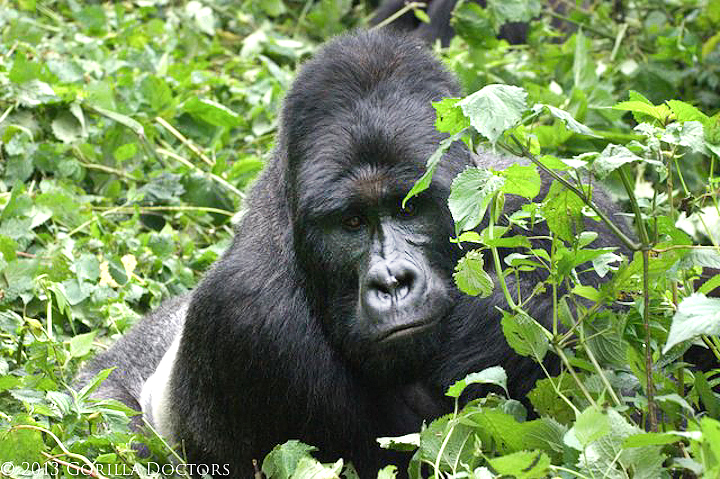 Silverback Bageni, who now leads his own group after splitting off from Kabirizi group in Virunga National Park.
Silverback Bageni, who now leads his own group after splitting off from Kabirizi group in Virunga National Park.
Currently, the Mikeno Sector of Virunga National Park holds seven gorilla groups. Five groups are located near the Bukima/Gatovu patrol posts (Kabirizi, Bageni, Rugendo, Huba and Munyaga) and two groups are located at Jomba and Bikenge (Lulengo and Mapuwa, respectively).
Here is Dr. Eddy’s report:
“We visited Bageni group from the Bukima patrol post. Our team started trekking to the group at 7:40am, leaving the patrol post under light rain, walking along the park boundaries and going through villages. We entered the forest at 8:20am. At 10:04 am, we found the groups’ night nests and heard the gorillas nearby, feeding, breaking branches and climbing trees. 15 night nests were counted before we moved on to observe the group.
Observation began at 9:15am. Dominant silverback Bageni was stable, appeared peaceful and was resting with three females and their young infants. They were periodically grooming one another and when Bageni began to move to feed, the females and infants followed.
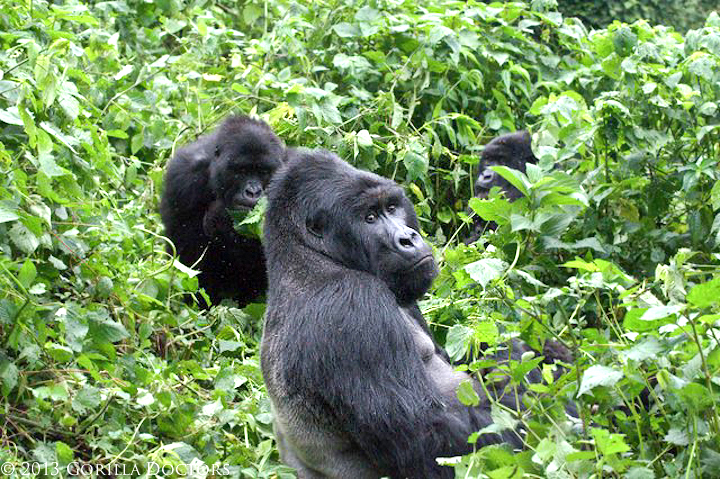 Bageni resting with a couple females.
Bageni resting with a couple females.
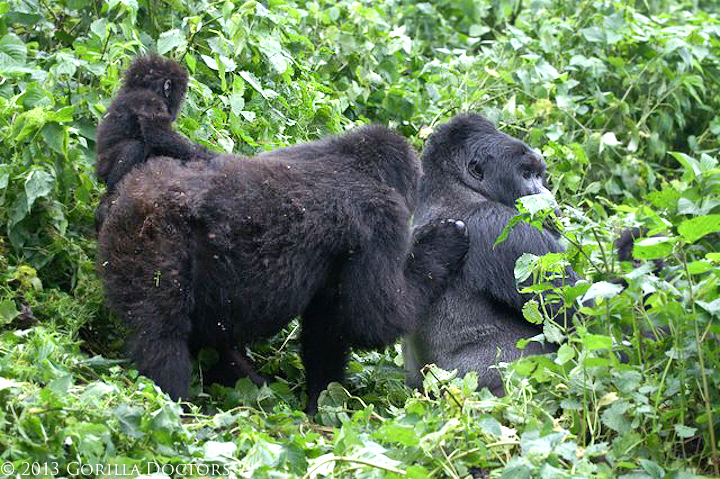 A female, with her infant riding on her back, grooms Bageni.
A female, with her infant riding on her back, grooms Bageni.
We were able to check on adult female Rubaka and her infant Kagera, who was reported to have a skin lesion on his upper lip and had lost the eyelashes on both eyelids. From the observation, the skin lesions on the infant had disappeared but there was some dried skin on his chest. The baby was behaving normally, breast feeding and appeared to have no major health problem.
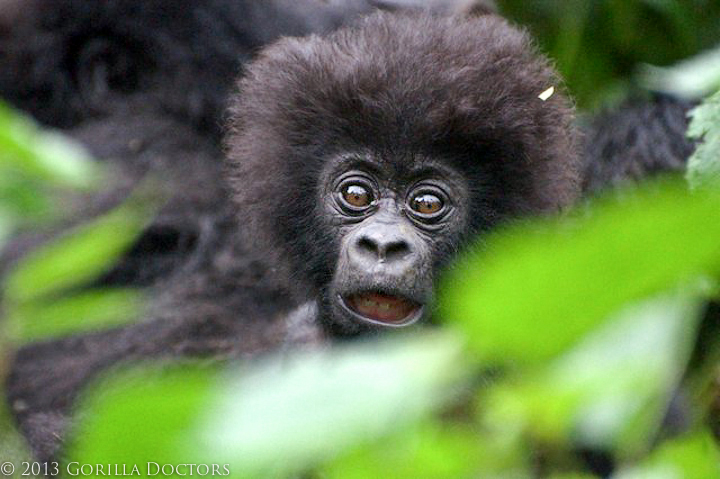 The herpes-like lesions on Kagera’s face have cleared up.
The herpes-like lesions on Kagera’s face have cleared up.
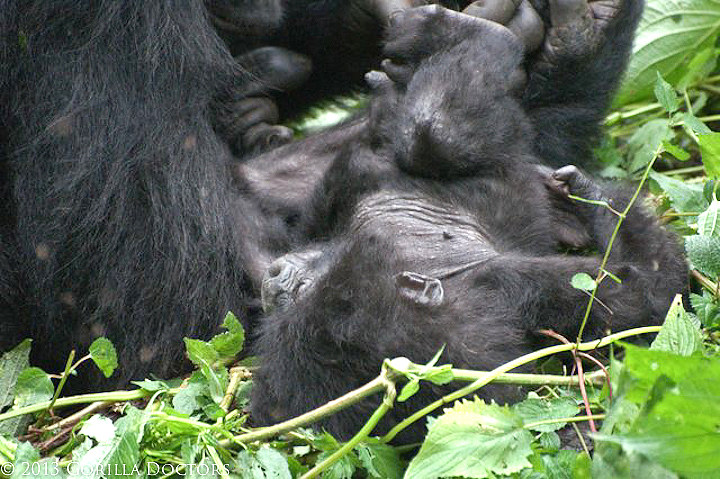 Dried skin on infant Kagera’s chest.
Dried skin on infant Kagera’s chest.
We were able to observe and count 20 gorillas and all appeared to be in good health. Virunga National Park trackers will continue to monitor the infants for any other skin issues and report back to Gorilla Doctors about progress and any new cases.
You can follow the Gorilla Doctors health monitoring efforts on our Facebook page, where we post photos and notes from our monthly visits.
Please consider supporting us by making a secure online donation. Every dollar you give goes to directly supporting our gorilla health programs and One Health initiative. Thank you for your generosity.


 Donate
Donate